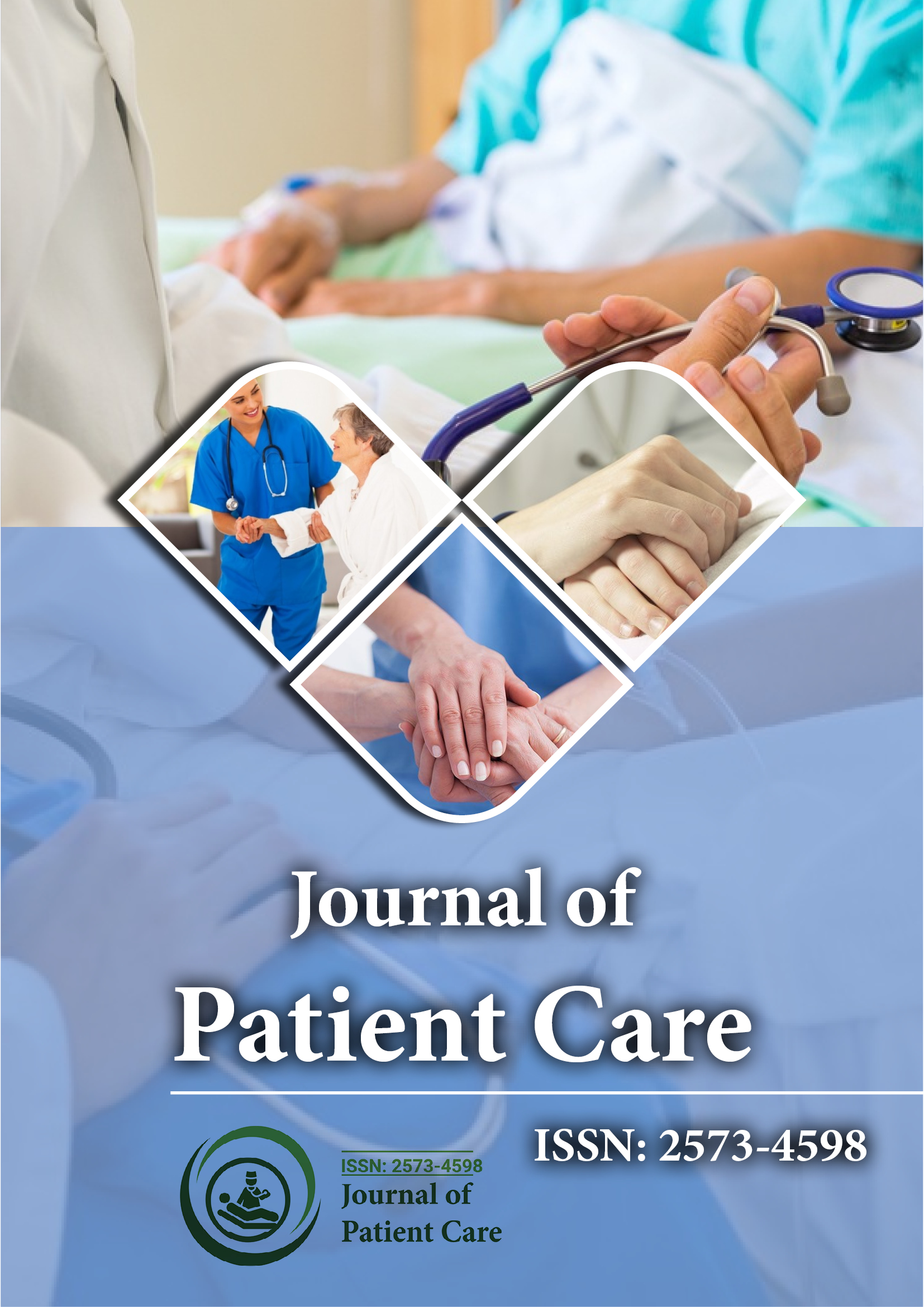Indexed In
- RefSeek
- Hamdard University
- EBSCO A-Z
- Publons
- Geneva Foundation for Medical Education and Research
- Euro Pub
- Google Scholar
Useful Links
Share This Page
Journal Flyer

Open Access Journals
- Agri and Aquaculture
- Biochemistry
- Bioinformatics & Systems Biology
- Business & Management
- Chemistry
- Clinical Sciences
- Engineering
- Food & Nutrition
- General Science
- Genetics & Molecular Biology
- Immunology & Microbiology
- Medical Sciences
- Neuroscience & Psychology
- Nursing & Health Care
- Pharmaceutical Sciences
Opinion Article - (2023) Volume 9, Issue 3
Collaboration for Innovation: Integrating Telenursing into Routine Clinical Practice for Lung Cancer Care
Hamideh Nourian*Received: 01-May-2023, Manuscript No. JPC-23-21675 ; Editor assigned: 04-May-2023, Pre QC No. JPC-23-21675 (PQ); Reviewed: 18-May-2023, QC No. JPC-23-21675 ; Revised: 25-May-2023, Manuscript No. JPC-23-21675 (R); Published: 01-Jun-2023, DOI: 10.35248/2573-4598.23.9.230
Description
Lung cancer is a leading cause of cancer-related deaths worldwide, with a high prevalence and significant impact on patients' quality of life. The management of lung cancer involves various treatment modalities, including surgery, chemotherapy, radiation therapy, and targeted therapies. However, accessing appropriate healthcare services, particularly for patients receiving treatment at home, can be challenging. Telenursing, which involves the use of telecommunication technologies to deliver nursing care remotely, has emerged as a potential solution to form a connection between patients and healthcare providers. Telenursing interventions have shown promising results in symptom management, as they enable timely assessment, monitoring, and intervention.
Remote monitoring devices, such as wearable sensors and vital sign monitors, can provide real-time data to healthcare providers, allowing for early detection of symptom exacerbation and prompt intervention. Additionally, telenursing platforms facilitate the provision of education and self-management strategies to patients and their caregivers, empowering them to better manage their symptoms at home. Patient satisfaction is a crucial aspect of healthcare delivery, as it reflects the quality of care received and the patient's overall experience. Telenursing interventions have demonstrated the potential to enhance patient satisfaction among individuals with lung cancer. The convenience and accessibility of telecommunication technologies enable patients to communicate with healthcare providers from the comfort of their homes, reducing the need for travel and wait times. This enhanced accessibility and timely communication contribute to increased patient satisfaction, as they can readily seek guidance, support, and clarification regarding their condition and treatment plan. Lung cancer and its treatment can significantly impact a patient's quality of life.
Telenursing interventions have the potential to improve the quality of life for people with lung cancer by addressing their physical, psychological, and social needs. Remote monitoring and support provided through telecommunication technologies allow healthcare providers to promptly intervene and manage distressing symptoms, thereby improving overall well-being. Moreover, telenursing platforms can facilitate psychosocial support through virtual support groups, counseling sessions, and educational resources, promoting social connectedness and emotional well-being. The impact of telenursing on healthcare outcomes for individuals with lung cancer is an area of ongoing research. Preliminary findings suggest that telenursing interventions can positively influence healthcare outcomes, including reduced hospital readmissions, improved adherence to treatment plans, and enhanced disease management.
Remote monitoring of vital signs, symptoms, and medication adherence enables healthcare providers to identify potential issues early and intervene promptly, preventing complications and optimizing treatment outcomes. When implementing telenursing for people with lung cancer at home, it is crucial to address ethical considerations and ensure patient privacy. Telecommunication technologies involve the exchange of sensitive medical information, and healthcare providers must uphold strict confidentiality standards. Adequate security measures, such as encryption and secure data storage, should be in place to safeguard patient data. Moreover, informed consent should be obtained from patients, ensuring they understand the purpose, risks, and benefits of telenursing interventions. Clear guidelines and protocols should be established to govern the use of telecommunication technologies and ensure ethical and legal compliance.
Conclusion
Telenursing has the potential to significantly improve the care and support provided to people with lung cancer at home. The use of telecommunication technologies enables timely symptom management, enhances patient satisfaction, improves quality of life, and positively impacts healthcare outcomes. However, to fully realize the benefits of telenursing, it is crucial to address ethical considerations, overcome challenges, and ensure equitable access for all patients. Continued research, standardized practices, and collaboration are necessary to further optimize the effectiveness and implementation of telenursing in the care of people with lung cancer at home. By harnessing the power of technology, healthcare providers can enhance patient-centered care and improve the overall well-being of individuals battling lung cancer.
Citation: Nourian H (2023) Collaboration for Innovation: Integrating Telenursing into Routine Clinical Practice for Lung Cancer Care. J Pat Care. 9:230.
Copyright: © 2023 Nourian H. This is an open-access article distributed under the terms of the Creative Commons Attribution License, which permits unrestricted use, distribution, and reproduction in any medium, provided the original author and source are credited.
